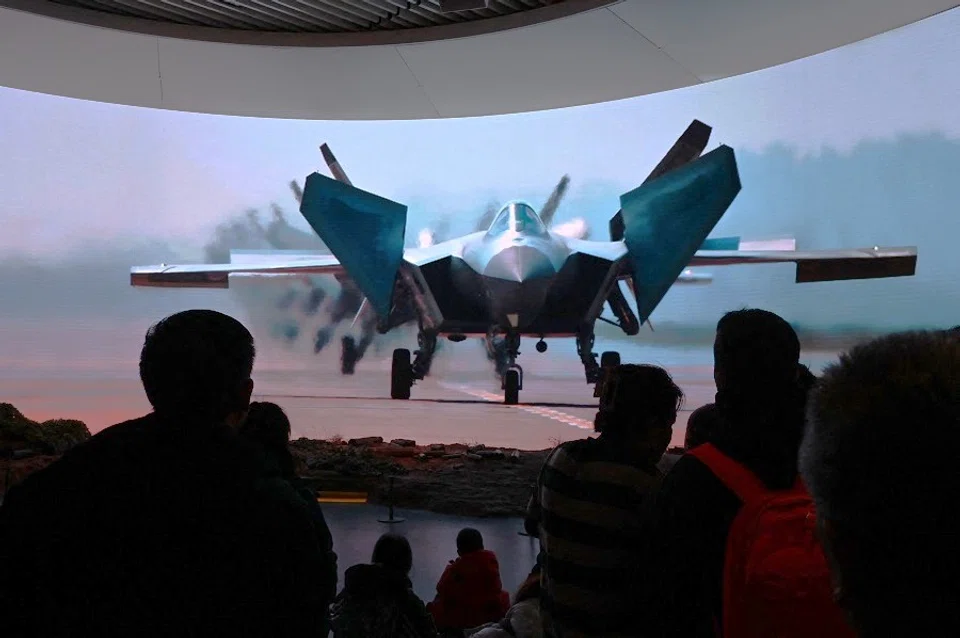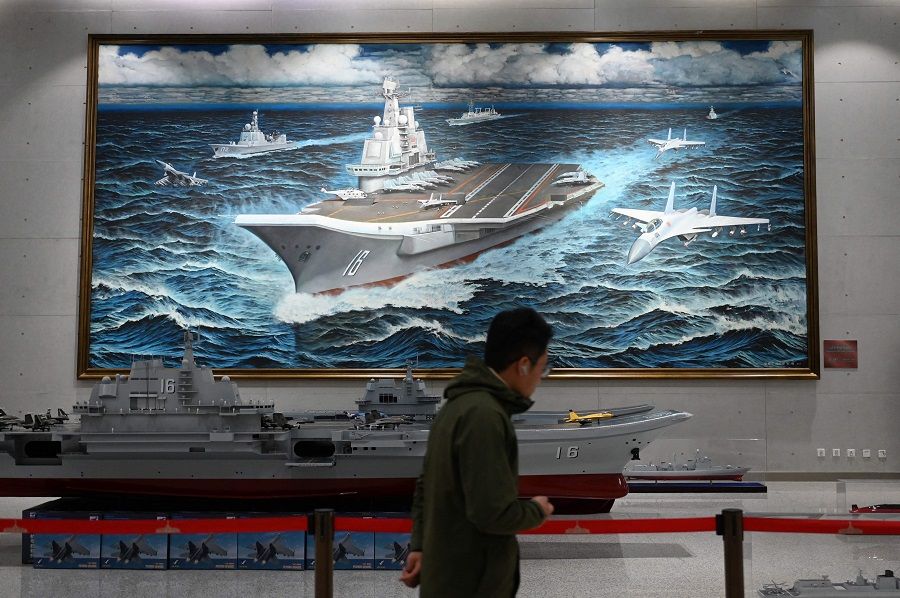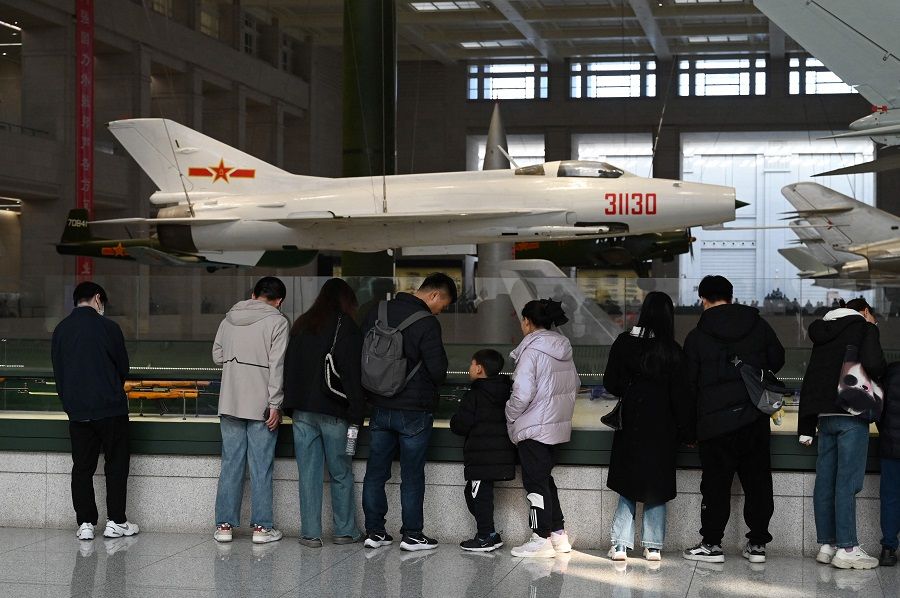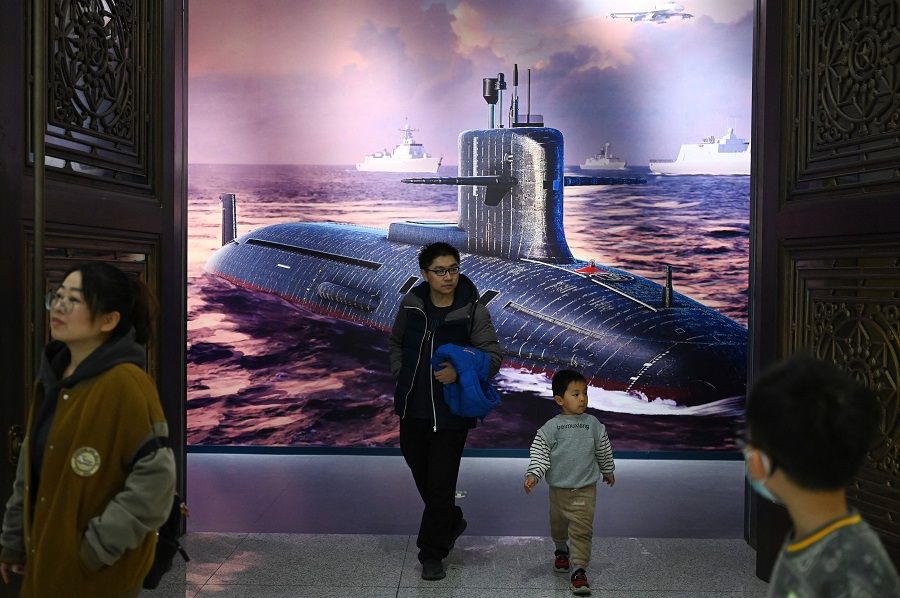PLA upgrades armaments in race against US military

China has recently been making big moves to upgrade its military equipment. First, during the Two Sessions in early March, senior officials of the People's Liberation Army (PLA) Navy and Air Force respectively revealed new developments on aircraft carriers, the J-35 stealth fighter and the H-20 stealth bomber. The South China Morning Post (SCMP) later reported that China's new hypersonic drone is capable of reaching the continental US.
These developments indicate that the PLA is accelerating its race against the US military amid deepening China-US rivalry.
No technical bottleneck
The PLA has three aircraft carriers. Liaoning and Shandong have long been commissioned and combat-ready, while Fujian, which has an electromagnetic catapult system, is set to undergo sea trials and be formally commissioned this year.
But compared with the US military's fleet of 11 nuclear-powered aircraft carriers, China's three aircraft carriers are all conventionally powered; their essential performance lags far behind that of the US carriers as well. The outside world is waiting to see when China will start building nuclear-powered aircraft carriers.
During the Two Sessions, when asked by Hong Kong media whether China's fourth carrier would be nuclear-powered and whether there was any technical bottleneck, PLA Navy political commissar Yuan Huazhi responded that the matter "will soon be announced" and that he had not heard of any "technical bottleneck".
When asked whether the sightings of a J-35 stealth fighter on the Liaoning were just a bravado, Yuan asserted that the J-35 is not finalised but they will not play a bluff.
... it is certain that China will start developing a nuclear-powered aircraft carrier. At the same time, while the J-35 has not been finalised, it will certainly be on the aircraft carrier.

Yuan's remarks show that China no longer faces any technical bottleneck in building nuclear-powered aircraft carriers. While he did not confirm that China's fourth aircraft carrier will be nuclear-powered, it is certain that China will start developing a nuclear-powered aircraft carrier. At the same time, while the J-35 has not been finalised, it will certainly be on the aircraft carrier.
With the PLA Air Force's massive upgrade of its fifth-generation stealth fighter, the J-20, as well as the KJ-500 early warning and control aircraft, and large transport aircraft, the PLA Navy is considered to be the military service lagging furthest behind the US.
In recent years, the PLA Navy has been massively upgrading new destroyers, frigates, amphibious assault ships and dock landing ships as quickly as "dropping dumplings into soup broth" (下饺子), narrowing the gap with the US Navy. But when it comes to nuclear-powered aircraft carriers, the PLA still has a long way to go to catch up with the US military.
China's aircraft carriers are currently mainly responsible for offshore defence and blocking external military forces from assisting Taiwan in the event of a conflict in the Taiwan Strait, rather than conducting far sea operations.
J-35 almost ready
However, China's aircraft carriers have very different missions from US aircraft carriers. While the US's aircraft carriers are deployed globally, China's aircraft carriers are currently mainly responsible for offshore defence and blocking external military forces from assisting Taiwan in the event of a conflict in the Taiwan Strait, rather than conducting far sea operations.
From this perspective, China's aircraft carriers urgently need to be armed with fixed-wing carrier-based airborne early warning and control (AEWC) aircraft and fifth-generation stealth fighters. This ensures that the combat capabilities of the existing aircraft carriers are strengthened and that they have real deterrent power.

It is thus not that important or urgent for China's fourth aircraft carrier to be nuclear-powered. This is because nuclear-powered aircraft carriers take a longer time to construct and have a more tedious testing and verification process. Even if China has started to build a nuclear-powered aircraft carrier, combat capabilities would take until after 2030 to develop.
In fact, the PLA is actively trying to arm Fujian with the KJ-600 fixed-wing carrier-based AEWC aircraft, while images depicting the test flight of the J-35 "3503 prototype" stealth fighter have also been recently released. Based on the images, the pitot tube (for measuring airspeed) has been removed, which means that the J-35 is about to be finalised.
In January, CCTV reported that carrier-based aircraft pilots hope to fly more advanced fighters than the J-15 carrier-based aircraft by 2024, indicating that it is almost certain that the J-35 will be on the aircraft carrier.
As soon as the long-range H-20 with stellar stealth capability is commissioned, China will have similar nuclear strike capabilities as the US and Russia, and its strategic deterrence will step one level higher.
Last piece of China's 'nuclear triad'
The PLA's other imminent "killer weapon" is the H-20 stealth bomber, which attracted widespread attention. During the Two Sessions, Wang Wei, deputy commander of the PLA Air Force, told Hong Kong Commercial Daily that China's stealth bomber is "coming soon, just wait". He said, "There is no bottleneck, and all problems can be solved. Our scientific researchers are progressing well, they are fully capable."
He even added that the new stealth bomber would be commissioned shortly after its test flights.

Wang's remarks show that the H-20 is progressing relatively well and could even be unveiled soon. But some people remain sceptical - after all, then PLA Air Force Commander Ma Xiaotian revealed back in 2016 that China was already developing a new long-range bomber.
Military experts analysed that the H-20's unveiling was delayed in order for it to be benchmarked against the US's new-generation stealth bomber B-21. Prior to this, the H-20 was benchmarked against the US military's B-2 stealth bomber. But because the B-2 has since become obsolete, the H-20 must keep up with the US military's latest equipment, or it will fall behind as soon as it is unveiled, and its strategic significance will be greatly diminished.
Based on China's current level of science and technology and its strong industrial manufacturing capability, the upgrading of its military equipment is no longer a difficult task.
The stealth bomber is seen as the last puzzle piece to China's "nuclear triad". As soon as the long-range H-20 with stellar stealth capability is commissioned, China will have similar nuclear strike capabilities as the US and Russia, and its strategic deterrence will step one level higher.
But the PLA is not content with merely following the US's military development; it wants to develop its own unique "trump card", including hypersonic weapons that are more powerful than the US's.

SCMP reported on 11 March that China is testing a new generation of hypersonic drones, possibly the MD-22 that was on display at the Zhuhai Airshow. The MD-22 unmanned aerial vehicle has a speed of up to Mach 7 over a distance of 8,000 km; its aerodynamic efficiency is superior to that of the US's F-22, and is capable of delivering a 600 kg payload at speeds of up to Mach 7 to the continental US.
By announcing the PLA's new military equipment during the Two Sessions, senior PLA officials clearly hope to show that the Chinese military is ramping up its military modernisation efforts and actively preparing to deal with any opponent. Based on China's current level of science and technology and its strong industrial manufacturing capability, the upgrading of its military equipment is no longer a difficult task.
The US military will certainly not just sit around waiting for the PLA to catch up with and surpass them, and the China-US military race will continue to intensify and attract widespread attention.
This article was first published in Lianhe Zaobao as "解放军正在与美军赛跑".
